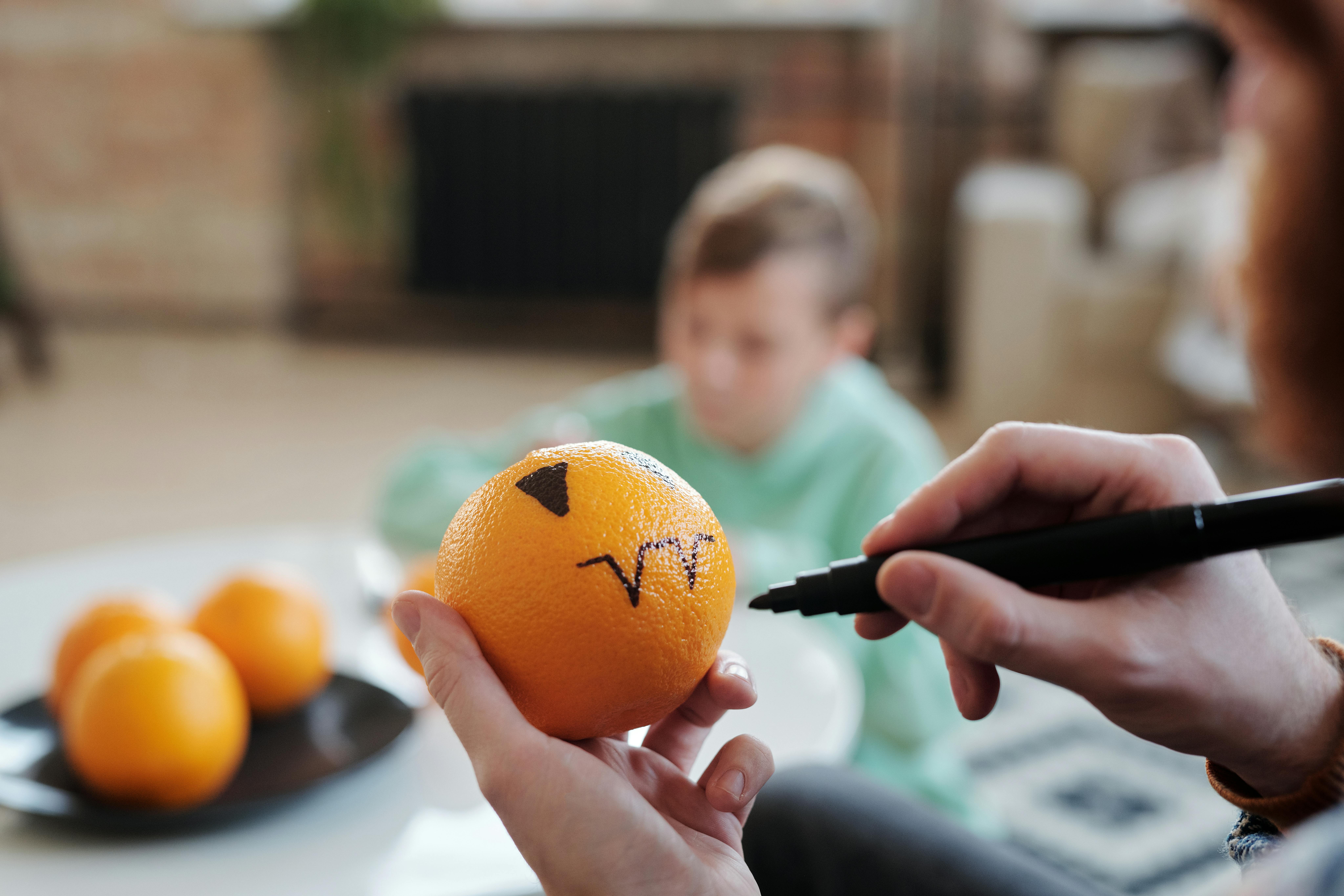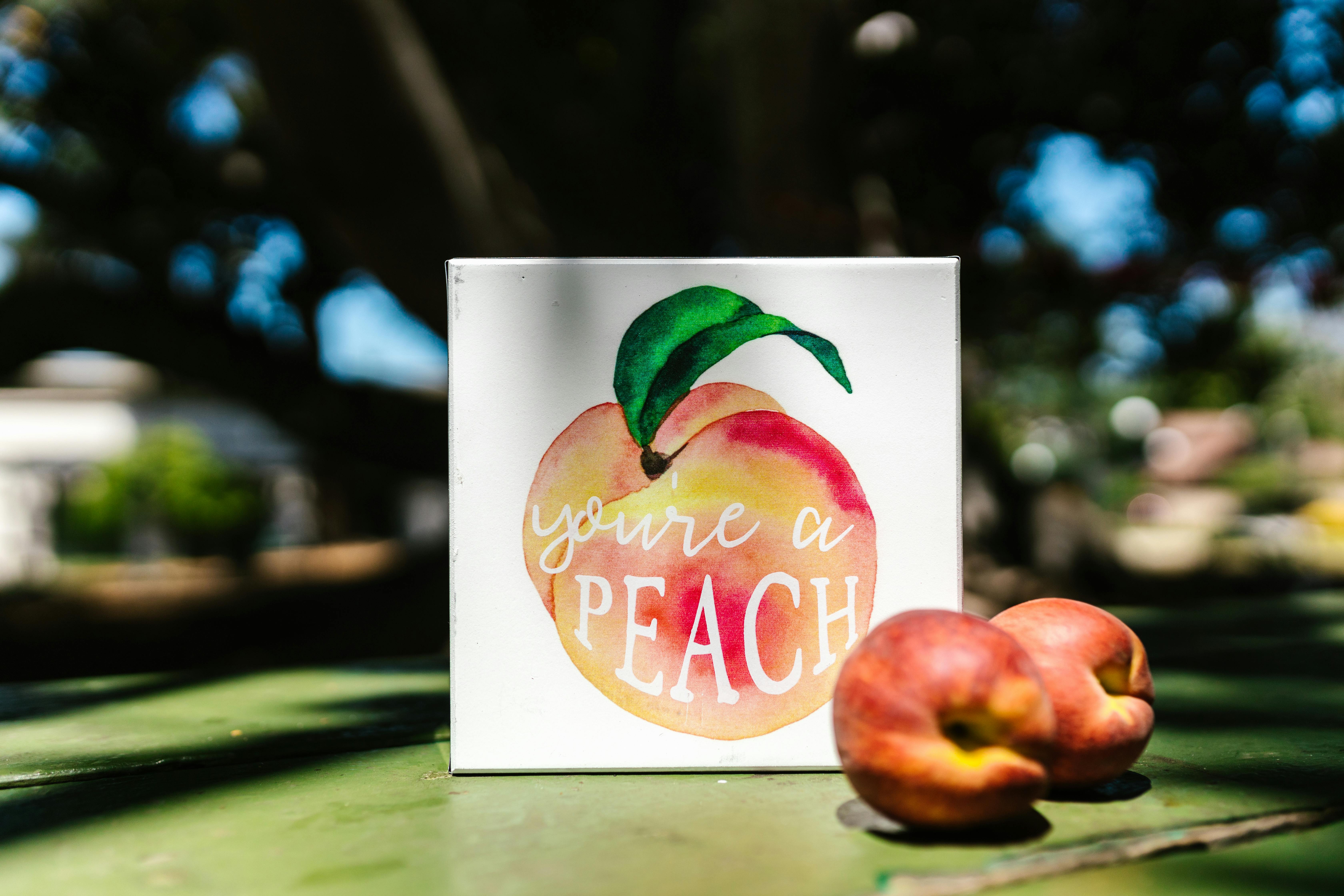Step 1: Sketch the Outline
The first step to drawing a banana is to sketch the outline. Start by drawing a curved line for the top of the banana and then draw another curved line going downward for the bottom of the banana. This will create the basic shape for your banana. Make sure to draw lightly so that you can erase any mistakes or adjust your lines later.Step 2: Add Dimension
Once you have your basic outline, it is time to add some dimension. First, draw two curved lines across the length of your banana to create segments on the surface. Then draw two smaller curved lines in each segment to form ridges on your banana. Make sure that your lines vary in thickness and shape as this will give more realism to your drawing.Step 3: Color Your Banana
Now it is time to color in your banana! Start by coloring in the entire surface with a yellow marker or pencil crayon. Then use an orange marker or pencil crayon to add darker shading around the edges and along the ridges of your banana. If you want, you can also add some brown shading along the ridges as well for more realism.Step 4: Finish Your Drawing
The final step is to finish off your drawing. You can do this by adding additional details such as bits of light and dark shading, highlights, or even some texture if desired. Once you are happy with how it looks, you can go ahead and erase any remaining pencil marks that are still visible. And there you have it – a perfect and realistic looking banana!Drawing a Pear
Drawing a pear can be a fun and creative experience. Pears have a unique shape that can be tricky to replicate. To draw a realistic looking pear, you will need some supplies like paper, pencils, and erasers. Start by sketching out the basic shape of the pear with light pencil strokes. Make sure to shade in the areas that will be darker than others, such as the stem and bottom part of the pear. Once you have the outline of your pear completed, erase any unnecessary lines or shading that you don’t need.Now it’s time to add more detail to your drawing. Start by adding shadows and highlights to give your pear more depth and realism. Use different shades of pencils or markers to create these effects. You can also add texture within your drawing using cross hatching techniques or other mark making tools. Finally, use an eraser to blend everything together for a smoother finish.
With practice and patience, drawing a pear can be accomplished with ease! Start with simple shapes and outlines then progress on from there. Don’t forget to experiment with different colors and techniques as you go along – this is how you will find your own unique style!
Drawing Grapes
Grapes are one of the oldest fruits known to man, so it is no surprise that they are a popular subject for art. Drawing grapes can be quite challenging, but with some basic knowledge and practice you can master the skill. To begin, you should start by sketching out the overall shape of the grapes. If you are drawing a bunch, look for the shapes within each grape that will give them individual character. Use curved lines to define each grape and draw in details such as veins and shadows where appropriate. Once you have defined the individual grapes, start to fill in the dark areas using varying shades of purple. You can also add texture by creating small dots or imperfections in the skin of each grape. Finally, don’t forget to add a few highlights with white or yellow to make your grapes look realistic and life-like!How to Sketch a Mango
Sketching a mango is a fairly straightforward task that anyone can do with basic drawing supplies. All you need is a pencil, paper, and a few basic sketching techniques. To get started, draw an oval shape with two curved lines. This will be the basic shape of your mango. Next, add details to your mango by sketching out the stem and leaves at the top of the oval. You can also add texture to your mango by drawing out small lines and dots around its surface. Finally, use shading techniques to bring your mango to life. Start by lightly shading the darker areas of the mango and then gradually darken those areas until you achieve the desired effect.Drawing a mango doesn’t have to be difficult or time consuming. With just a few simple steps and some practice, you can create beautiful sketches of this tropical fruit in no time!

Drawing a Watermelon
Creating a realistic watermelon drawing requires an understanding of the shape and texture of the fruit. To start, draw a large circle in the middle of your page. Then draw two curved lines, one coming out from either side of the circle. This will create the basic shape of the watermelon. You can then add more details such as curved lines in each section to create the ridges and curves that make up its surface. To make your watermelon drawing look more realistic, you can add shading to give it more dimension and contrast. Start by adding darker colored lines along each ridge and curve to give them depth. Then, use lighter colors to shade in between each line for texture. Finally, you can add details such as seeds or even a stem at the top for extra realism. With practice, you’ll be able to create realistic watermelon drawings that look good enough to eat!Can Drawing Fruits Help Me Understand How to Plant Them in Animal Crossing?
Drawing fruits can enhance your understanding of their characteristics and growth patterns in Animal Crossing. By observing their shapes and colors, you can gather insights into how they thrive. This artistic practice can help you learn the steps to plant fruit trees, ensuring a vibrant garden in your virtual world.
How to Draw an Orange
Drawing an orange is a great way to practice your drawing skills and create a realistic-looking piece of art. While it may seem intimidating, drawing an orange can be broken down into simple steps. With the right materials and knowledge, you’ll be able to draw an orange with ease. Here’s what you’ll need: pencils, erasers, paper, and some patience.The first step in drawing an orange is to lightly sketch the basic shape of the orange using a pencil. Start by drawing a large circle for the base of the fruit and then draw two smaller circles at the top for the stem and leaves. Once you have your basic shape drawn out, use curved lines to add more detail and texture to your sketch.
Next, start adding color and shading to your drawing using various shades of orange. Start with lighter colors on top of your sketch and gradually move towards darker shades towards the bottom for a realistic look. When shading be sure to use short strokes or dots instead of long continuous lines as this will give your orange more texture and depth.
Once you have added all the colors it’s time to finish up your drawing by adding highlights and details such as creases or dimples on the surface of the fruit. You can also add some texture around the leaves or stem as well as adding some shadows if desired. Finally, erase any unwanted lines or smudges so that your final product is neat and clean-looking.
Drawing an orange doesn’t have to be complicated or intimidating! With a bit of practice, you’ll soon be able to draw realistic-looking oranges with ease!
What You Need
Creating a pineapple requires a few basic items. You’ll need a sharp knife, a cutting board, and of course, a fresh pineapple. It also helps to have gloves, an apron or other protective clothing to keep the juice from getting on your skin.Preparation
Once you have all the items you need, it’s time to prepare the pineapple. Rinse it off and place it on the cutting board. Cut off both ends of the fruit and discard them. Then cut off the outer skin in strips, making sure to cut as close to the fruit as possible without cutting into it.Coring
Now that you have removed the outer skin of the pineapple, it’s time to core it. You can do this by inserting your knife into the top of the pineapple and gently twisting until you reach the center core. Pull out the core and discard it.Cutting
Now that your pineapple is cored, you can begin cutting it into slices or chunks depending on how you plan to use it. Make sure each slice is even in size so that they cook evenly if they are being cooked or grilled later on. Once you’ve finished slicing your pineapple, you’re done! Enjoy!
Conclusion
Drawing fruits can be a fun and rewarding activity for artists of any skill level. Whether you’re an experienced artist or just beginning to explore the world of art, drawing fruits can help you grow your skills. It’s important to observe your subject carefully, so you can accurately capture its form and texture. With practice, you can develop a better understanding of light and shadow, composition, and perspective. Drawing fruits can also be an enjoyable way to connect with nature, as well as practice mindfulness and relaxation. With time and dedication, you’ll be able to create beautiful art that showcases the world around us.We hope this article has helped you understand the basics of drawing fruits. Whether you enjoy painting still lifes or doing personal sketches, we wish you the best of luck in your artistic endeavors!


